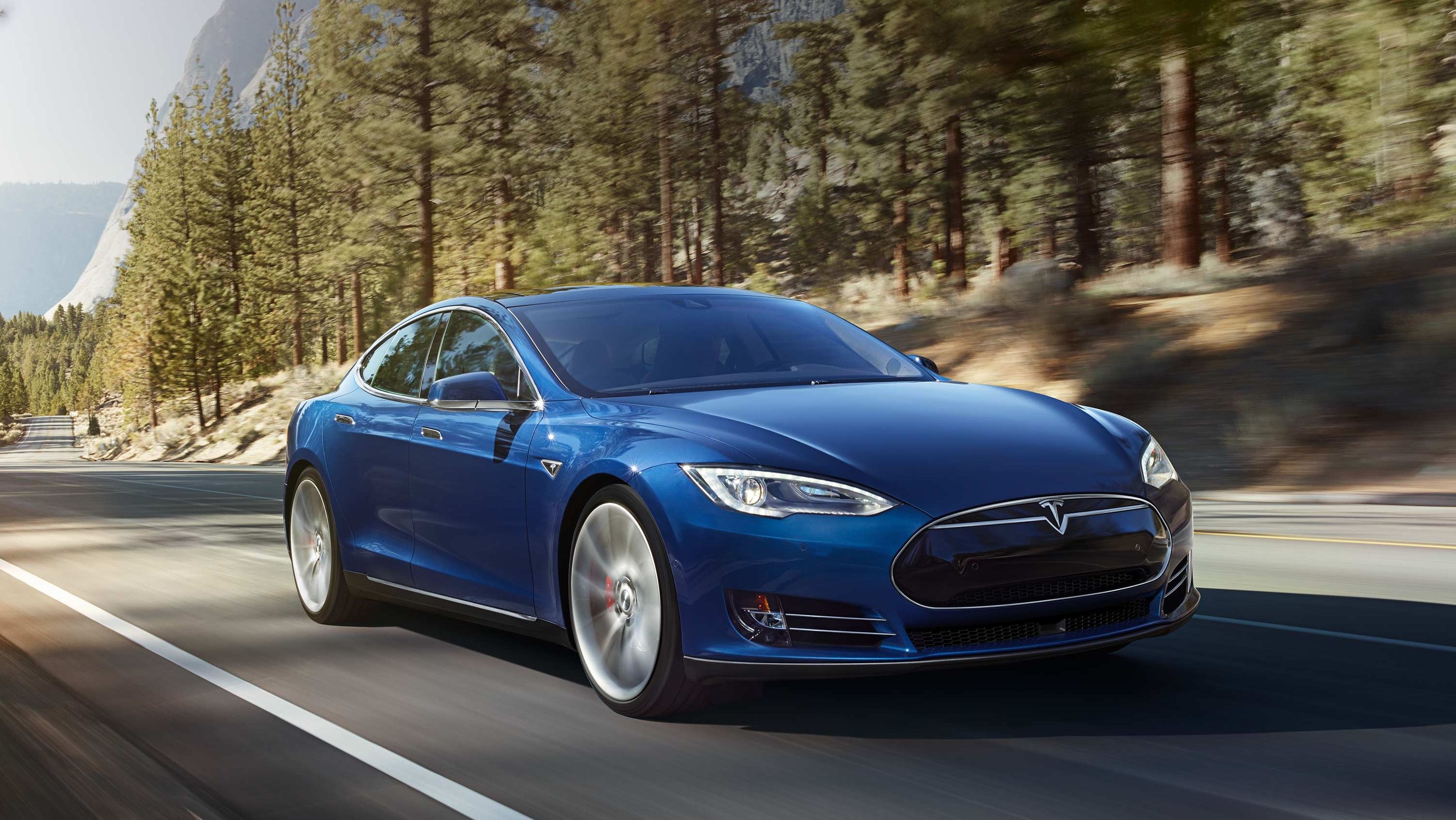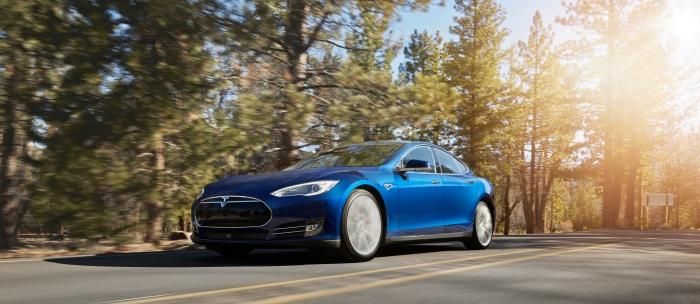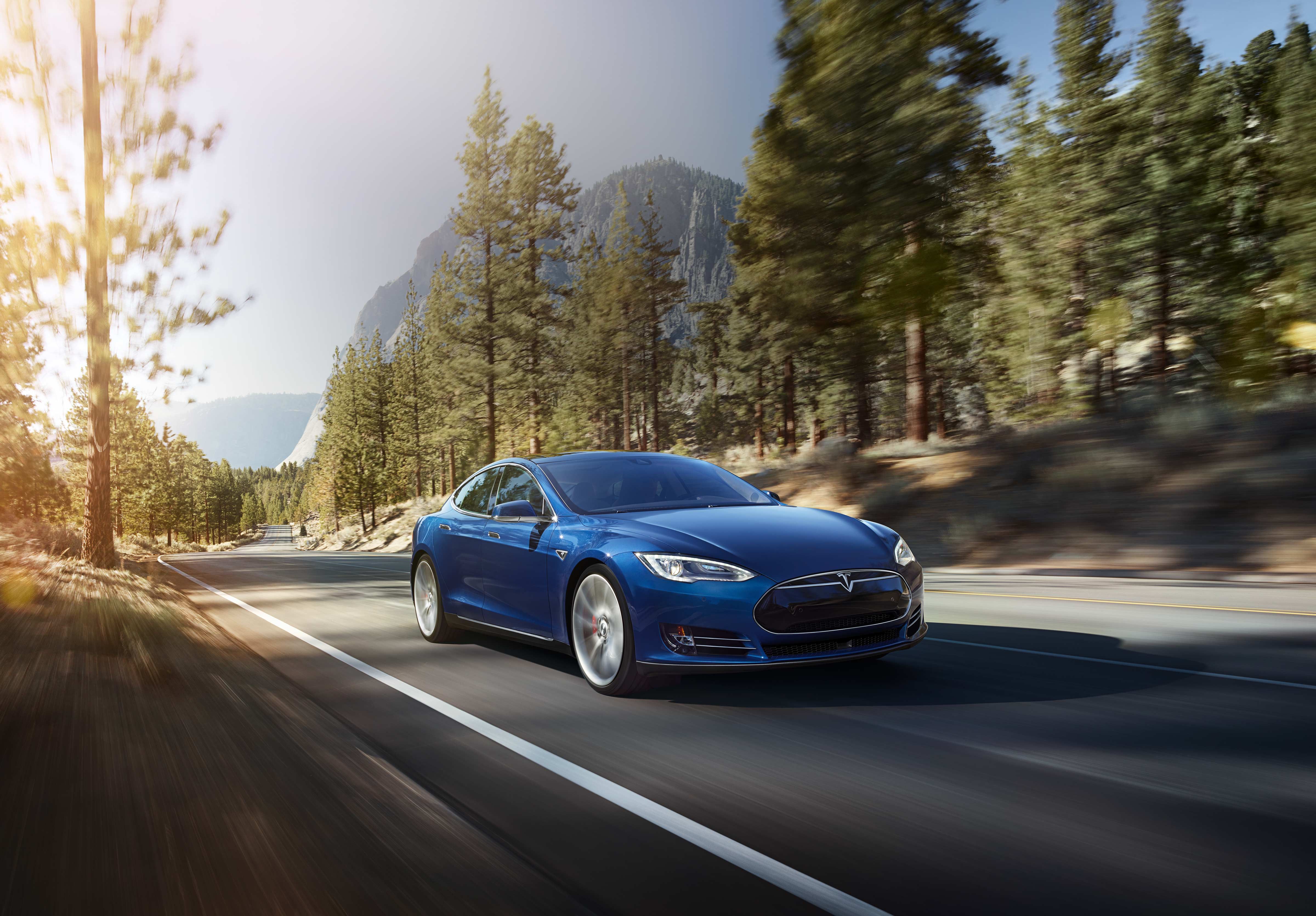First launched for the 2012 model year, the Tesla Model S->ke3329 has gone through countless updates, ranging from minor over-the-air tweaks to huge powertrain updates. Despite these updates, there are two things that have remained consistent with the Model S, and those are its timeless looks and its status as a revolutionary model that’s trying to change the world’s view on electric vehicles. In late 2014, Tesla introduced a significant overhaul that marked the introduction of the “D,” which has a dual-motor all-wheel-drive system. For 2015, Tesla is introducing the new entry-level Model S 70D that replaces the old 60 kWh model.
This Model S 70D marks another key change for the Model S lineup, as it is the end of the line for rear-wheel-drive in the Model S. Like the elimination of the underpowered and shot-ranged 40 kWh model during the 2013 model year, and the introduction of the “D” in 2014, this is a natural move for the automaker. However, with the electric vehicle->ke1030 still in the toddler phase, is the market ready for this model?
Continue reading my full review to find out what I think of the Model S 70D.
2015 Tesla Model S 70D
- Make: Array
- Model: 2015 Tesla Model S 70D
- Horsepower: 329
Exterior
From the outside, the Tesla Model S 70D will look like any other Model S. The only real distinguishing characteristics will be its “70D” badges. This means it’ll have that same love-or-hate look that folks have come to know of the Model S. Some think it is excessively simple for the price paid, but others can appreciate its simplicity, as it allows the car to age more gracefully.
I am of the latter persuasion, as just like Audis,->ke14 it’ll be tough for anyone to really determine how old your Model S really is. This gives the car an almost timeless feel.
One of my favorite parts about the Model S is its almost hidden rear hatch that opens up to reveal either a large cargo area or a pair of rear-facing seats (a $3,000 option).
Interior
align=left>
The interior is one area where I join the folks that finds the Model S too simple. Honestly, with the exception of the iPad-like screen and the advanced gauges, I feel that the rest of the interior leaves a lot for me to desire.
My first time siting in the Model S, I noted that the seats were very basic, the leather didn’t feel overly premium, and the other materials didn’t feel like they were of the $70,000 variety. I understand that most of my money is going into the advanced drivetrain powering the Model S, but I would like to feel a little more comfortable.
I do have to give credit where it’s due, as Tesla did knock its seating arraignment out of the park. The rear seats can actually seat five people in relative comfort, and the two optional rear-facing seats give this sedan an unheard of seven-passenger seating. Additionally, for the 2015 model year Tesla did update its cabin slightly, including improved seat comfort, taller headrests, extra noise reduction, an increased visor size and a larger vanity mirror, standard parcel shelf and front trunk cargo net, an air ionizer and carbon filter, an updated steering column control module, and revised Alcantara trim work.
The new 70D adds in a few extra standard features that the outgoing base model, the 60, didn’t have. These premium features include navigation and blind-spot detection.
I feel that the Model S is just some optional premium sports seats and more supple leather away from having a great cabin. It just feels like it is lacking something.
The drivetrain is the big news here, as the 70D adds Tesla’s dual-motor all-wheel-drive system to its base-level sedan. Unfortunately, this model lacks the crazy amounts of horsepower and the “Insane” mode that the P85D has, but it is plenty powerful and quick.
The 70D’s 329-horsepower dual-motor setup is down 51 horsepower when compared to the Model S 60 that it replaces, but power’s not all that matters. Thanks to the added traction of the dual-motor all-wheel-drive system, the Model S 70D sprints to 60 mph in just 5.2 seconds, which is 0.7 seconds quicker than the outgoing base model. The 70D tops out at 140 mph.
The 70D also gets a healthy boost in EPA-certified range, as it can go a total of 240 miles, while the 60 could only travel up to 208 miles between charges by the EPA’s estimates. In terms of fuel economy equivalents, the EPA rates the Model S 70D at 101 mpg-e city, 102 mpg-e highway, and 101 mpg-e combined.
What’s more, the Model S 70D includes free access to Tesla’s network of Superchargers, which allows you to make cross-country drives completely free of charge. The old base model required an extra $2,000 to gain access to this feature.
Type
Dual-motor setup
Combined output
329 HP
Range
240 miles
Fuel Economy Equivalent (mpg-e
101 city / 102 highway / 101 combined
Battery
70 kWh
0-60 mph
5.2 seconds
Top Speed
140 mph
Now if you think that Tesla is just going to toss in all of this extra tech stuff free, you’re mistaken. However, Tesla is only increasing the price slightly. The base Tesla Model S 70D will star out at $75,000, which is a $5,100 price hike over the base price of the outgoing base model. Once you account for the up to $7,500 tax credit from Uncle Sam and Tesla’s $1,200 destination charge, you’ll end up with a minimum net price of $68,700.
There are no true full-electric luxury sports sedans available yet, making the closest competitor the Porsche Panamera S E-Hybrid. In true Porsche fashion, the Panamera comes with all of the comfort and luxury that we want from the Model S, but that it simply cannot offer due to cost constraints.
The Panamera’s drivetrain includes a 3.0-liter engine that produces 333 horsepower and 325 pound-feet of torque, and an electric motor that contributes 95 horsepower and 229 pound-feet of twist. Altogether, this hybrid system puts out 416 horsepower and 435 pound-feet of torque that heads to the rear wheels via a Tiptronic S transmission.
The S E-Hybrid does offer limited pure-electric driving, but it is only up to 15 miles and up to a top speed of 83 mph. Fuel economy is nowhere near the Tesla's, at 50 mpg-e.
Despite its extra power, the Panamera S E-Hybrid can only match the Model S 70D to 60 mph, but its top speed is higher at 167 mph. In terms of pricing, the $96,100 is far more expensive than the Model S 70D, especially when you take the fuel savings and tax credits into consideration.
Click here to read our full review of the 2015 Porsche Panamera S E-Hybrid here.
Until the large luxury sedan realm gets more hybrids in it, the only other true competitor to the Tesla Model S 70D here in the U.S. is the BMW ActiveHybrid 7. Like the Porsche, this Bimmer comes with all of the luxury that the Tesla leaves us craving.
Where the BMW falls short is in its drivetrain. This ActiveHybrid 7 comes with a 3.0-liter inline-six engine mated to an electric motor. This system develops a total of 350 horsepower and 370 pound-feet of torque. Sure, that beats the Model S 70D out in terms of power, but its 0-to-60 sprint time takes 5.6 seconds – that’s 0.4 seconds slower than the Model S.
Additionally, BMW hasn’t caught up with everyone else in terms of fuel-sipping hybrids. The ActiveHybrid 7 gets only 22 mpg city, 30 mpg highway, and 25 mpg combined, which is a long way from the Panamera’s 50 mpg-e and light years away from the Model S’ 101 mpg-e.
Finally, the BMW ActiveHybrid 7 bases at $84,300, which is a significant hike over the full-electric Tesla Model S.
Click here to read more about the BMW ActiveHybrid 7 here.
I tend to be a little rough on Tesla, and I can admit that. I do so because I expect a lot from a company that is looking to change the way the world views electric cars. To date, I am still not convinced that the Model S is the vehicle to do so because the company is still hemorrhaging cash and relying on selling zero-emission credits to keep its coffers from going dry. Is the Model S 70D an awesome car? Absolutely, I think it is an amazing car and an incredible value, but it will not make Tesla a profitable company and that scares the crap out of me.
Drivetrain
Drivetrain Specifications
Prices
Competition
Porsche Panamera S E-Hybrid
BMW ActiveHybrid 7
Conclusion






